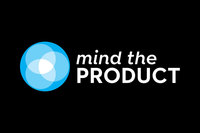Mind the Product
June 2016
The Experience is the Product
We tend to forget that the experience is the product we’re delivering. Every technical product category through history has followed this pattern – from a technology for technologies sake, to a feature war, to an experience. In this awesome talk from Mind the Product San Francisco, Peter Merholz highlights the importance of the last stage and how teams can better align themselves to focus on the experience.
Mobile phones are, of course, a great example of this pattern – the first Nokia smart phones that came out simply added internet connections and keyboards and invented a new category. Then a number of devices came out adding feature after feature, but it was only with the launch of the iPhone that the category transcended technical features and became about the experience. It’s not just hardware either – you only have to look at IRC as one of the first chat technologies, followed by HipChat, Jive, and others adding features, before Slack finally transcended those features by focusing on the experience.
Product Management wasn’t doing it’s job
These three stages interestingly map nicely onto my definition of product management – which places product management at the center of the intersection of Technology, Business, and UX. Peter argues that this is correct in theory but in reality the UX circle in product management is often too small. In fact, he argues that User Experience as a field only exists because Product Management wasn’t doing it’s job.
The challenge is that the technology and business side tends to be more analytical, reductive, and quantitative, whereas UX/Design tends to be more emotional, additive and qualitative. Which is why Steve Jobs analogy of the intersection of Technology and Liberal Arts is so apt when trying to build experiences.
As a co-founder of Adaptive Path, perhaps the world’s premier firm dedicated to user experience, Peter helped develop many of the practices we use today to understand our customers, their problems and how our products can solve them. Importantly, these include not just ideation, facilitation, and design exercises, but also ways to map the business value of design onto a product.
But when he went in-house at GroupOn he was dismayed to see there wasn’t enough design thinking in the process, and not enough strategic alignment or understanding of the customer to make the best decisions.
Design Practice = Product Management Practice
What he realised is that good design practice is actually good product management practice. Instead of coming up with a great idea, building it and then iterating it’s incumbent on us to spend time making sure the idea is the right one, to spend some time understanding our customers, and to make sure we’re building the right thing in the first place. It might take longer to get to your first release, but it will be much shorter to get to your best release.6
It’s important to understand that we who are building these products and services know things that our users don’t. A digital product is made up of a user experience, wrapped around some business logic, wrapped around some data. We’re deeply fa4miliar with the layers underneath the experience, but the users don’t care -it’s magic as far as they are concerned. But a lot of bad product development comes from thinking inside out, from taking the data and trying to present it to the world. But of course we have to design from the outside in, by understanding what our users are trying to do and then aligning what we do to those goals.
The Product is the Service is the Experience
Great user experiences come from the outside in. And when you start to look from the outside in, you realise that products and features are simply a manifestation of a service relationship. Everything is, or is becoming, a service. Everything is, or is becoming, part of a system.
As such product management is becoming a misnomer, an anachronistic term that pigeon holes us into thinking about features, about just the product. Instead we should be focused on the experience, and on the service that delivers that experience. And to deliver a coherent service experience we need to rethink how we structure our teams. Instead of aligning our product and design teams around features or products, we have to organise ourselves around customers. Teams should be focused on user experiences and customer types.
User Experience, Team Management, Design Teams, Product Management
Peter Merholz
See speaker profile
2 conference talks










